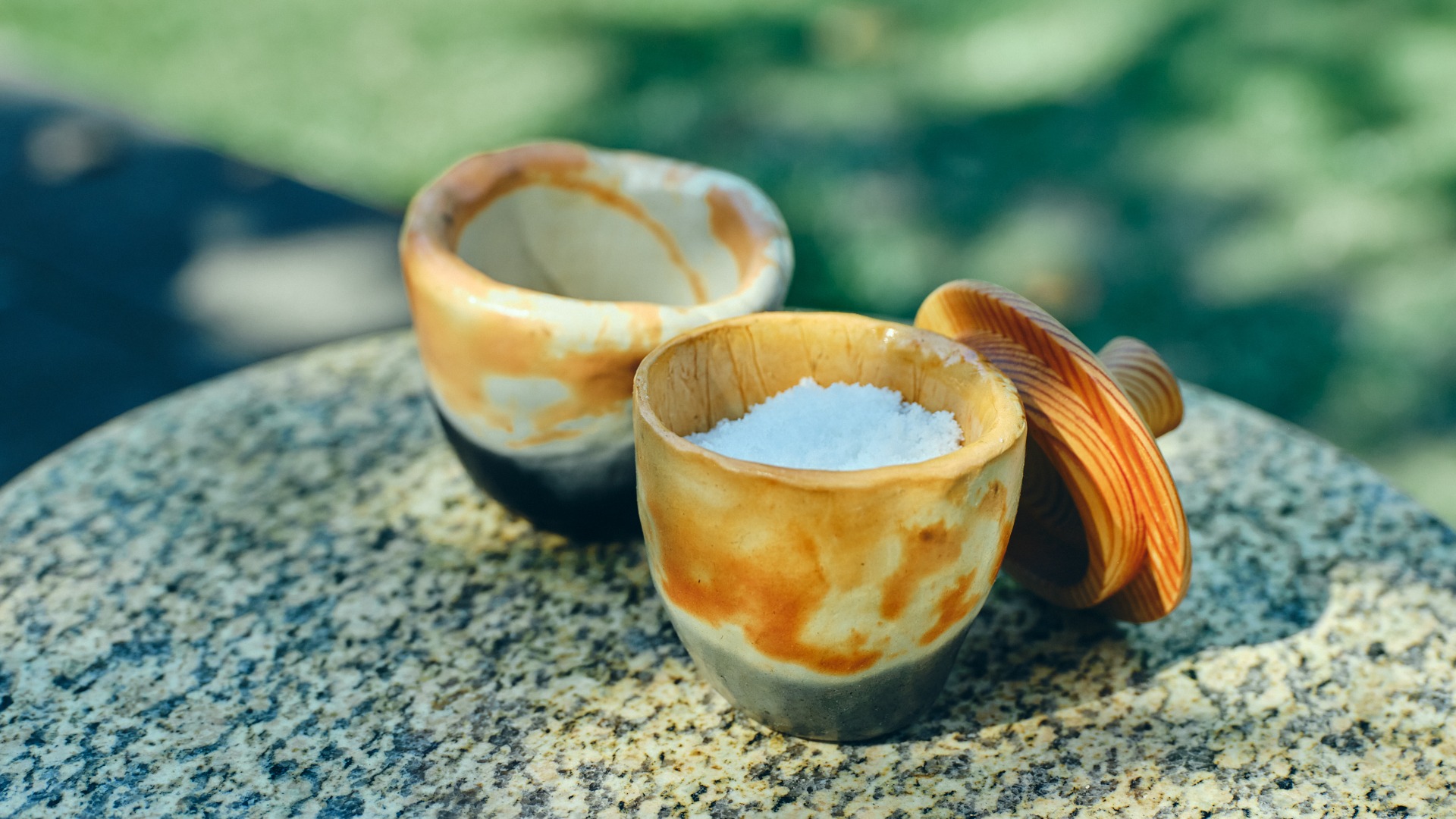Experience the Magic of Japan’s New Year Festival: A Guide to Celebrating Shogatsu Like a Local!
Picture this: the air is crisp, the streets are adorned with beautiful decorations, and the sound of laughter fills the atmosphere. Welcome to Shogatsu, Japan’s enchanting New Year festival! This celebration is not just a day; it’s a season of joy, reflection, and hope. Shogatsu, which translates to "New Year," is a time when families come together to honor traditions, reflect on the past year, and welcome new beginnings. It’s a vibrant tapestry of customs that varies from region to region, making each celebration uniquely special.
Across Japan, from the bustling streets of Tokyo to the serene temples of Kyoto, Shogatsu is celebrated with a delightful mix of ancient rituals and modern festivities. You’ll find families preparing special meals, visiting shrines, and engaging in various activities that embody the spirit of renewal and gratitude. Whether you’re in the heart of a city or the tranquility of the countryside, the essence of Shogatsu is palpable, inviting everyone to partake in the festivities.
Discovering the Essence of Shogatsu: Key Traditions and Customs
At the heart of Shogatsu lies a series of cherished traditions and customs that reflect the rich cultural heritage of Japan. One of the most significant practices is the preparation of Osechi Ryori, a traditional New Year’s feast beautifully arranged in lacquer boxes. Each dish is crafted with care, symbolizing prosperity, longevity, and happiness. For instance, black soybeans represent health, while herring roe signifies fertility. Families often gather to enjoy these culinary delights, sharing stories and laughter as they savor the flavors of the New Year.
Another delightful custom is Hatsumode, the first shrine visit of the year. This is a time for people to pray for good fortune and health in the coming year. Popular shrines like Meiji Shrine in Tokyo attract large crowds, but if you’re looking for a quieter experience, consider visiting smaller, local shrines that offer a more intimate atmosphere. Each region in Japan has its unique customs, and you might find local variations that add to the charm of the celebration.
As you explore the diverse ways Shogatsu is celebrated, you’ll discover fascinating regional traditions. For example, in the Tohoku region, you might encounter the Oni Matsuri, a festival featuring demon masks that ward off evil spirits. Meanwhile, in Okinawa, locals celebrate with a distinct blend of traditions influenced by their unique history and culture. This regional diversity makes Shogatsu a vibrant and exciting time to explore Japan.
The Culinary Delights of Shogatsu: Traditional Japanese New Year Food
No celebration is complete without food, and Shogatsu is a gastronomic delight! The centerpiece of any New Year’s feast is undoubtedly Osechi Ryori. These beautifully arranged bento boxes are filled with an array of colorful dishes, each carrying its own meaning. From sweet black soybeans to savory fishcakes, every bite is a reminder of the hopes and dreams for the year ahead.
Another must-try dish is Toshikoshi Soba, a comforting noodle dish traditionally eaten on New Year’s Eve. The long noodles symbolize longevity, making them a perfect choice for welcoming the New Year. Many families gather to enjoy this dish together, sharing wishes for a long and healthy life.
As you savor these traditional foods, listen to the stories from locals about their family meals. Each dish is steeped in history and personal anecdotes, adding a layer of warmth to the dining experience. Whether it’s the aroma of simmering broth or the vibrant colors of the Osechi spread, the culinary delights of Shogatsu will leave you with lasting memories.
Vibrant Decorations: Transforming Homes for Shogatsu
As the New Year approaches, homes across Japan are transformed with beautiful decorations that embody the spirit of Shogatsu. One of the most iconic decorations is Kadomatsu, a traditional pine decoration placed at the entrance of homes to welcome ancestral spirits. Made from bamboo and pine, these arrangements symbolize strength and resilience, setting the tone for the year ahead.
Another lovely decoration is Shimekazari, a sacred rope adorned with various items that ward off evil spirits. These decorations invite good fortune and prosperity, making them an essential part of the Shogatsu festivities. Walking through neighborhoods, you’ll notice the streets come alive with these vibrant displays, creating a festive atmosphere that is both welcoming and inspiring.
Participating in the decoration process is a wonderful way to immerse yourself in the local culture. Consider visiting local markets to pick up some decorations or even join a workshop to learn how to create your own. The significance behind each decoration adds depth to the celebration, making it all the more special.
Celebrating Shogatsu: A Day-by-Day Itinerary
Are you ready to soak in the magic of Shogatsu? Here’s a day-by-day itinerary that will guide you through the festivities from December 31 to January 3. Each day comes with its own unique experiences, ensuring you don’t miss a moment of joy and celebration!
December 31: New Year’s Eve Festivities
Start your Shogatsu adventure by embracing the excitement of New Year’s Eve! Many locals visit shrines to participate in Joya no Kane, the ringing of the temple bells at midnight. The sound of 108 bells is believed to cleanse the sins of the past year, setting a fresh tone for the New Year. Popular places like Zojoji Temple in Tokyo or Kiyomizu-dera in Kyoto offer a breathtaking atmosphere to witness this tradition.
As the clock strikes midnight, indulge in a bowl of Toshikoshi Soba, a noodle dish that symbolizes longevity. Many restaurants and homes serve this comforting meal, so join in on the local custom and share your wishes for the year ahead!
January 1: New Year’s Day Celebrations
Wake up to the first sunrise of the year! Many Japanese people rise early to witness the Hatsu-Hinode, the first sunrise. It’s a beautiful way to reflect on the year to come. After soaking in the rays, head to a nearby shrine for Hatsumode, the first shrine visit of the year. Popular shrines like Meiji Shrine in Tokyo will be bustling with energy, but if you prefer a quieter experience, seek out smaller local shrines.
Don’t forget to enjoy Osechi Ryori, the traditional New Year’s feast, with family or friends. Each dish is not just delicious but also carries a special meaning, making it a delightful way to start the year.
January 2: Family and Friends Day
This day is all about spending time with loved ones. Many families engage in games and activities that have been passed down through generations. Try your hand at Hanetsuki, a traditional Japanese badminton game, or Fukuwarai, a fun game similar to pin the tail on the donkey, but with a twist! You’ll be creating funny faces, which is sure to bring lots of laughter.
Visit local markets or shops to explore New Year decorations and souvenirs. This is a great opportunity to take home a piece of Shogatsu magic!
January 3: A Day of Reflection
As the festivities wind down, January 3 is a great time to reflect on the past year and set intentions for the one ahead. Many people take this day to enjoy a leisurely stroll through parks or gardens, soaking in the beauty of winter in Japan. You might even catch the last of the New Year decorations adorning the streets.
Before wrapping up your Shogatsu experience, consider visiting a local shrine one last time. This is a lovely way to express gratitude for the blessings of the past year and to pray for continued fortune in the year to come.
Hatsumode: The First Shrine Visit of the Year
Hatsumode is a cherished tradition during Shogatsu, marking the first shrine visit of the year. This practice is steeped in meaning, as people flock to shrines to pray for health, happiness, and prosperity in the coming year. Major shrines like Fushimi Inari Taisha in Kyoto and Meiji Shrine in Tokyo are popular spots, often bustling with visitors eager to partake in this spiritual experience.
While these famous shrines are wonderful, consider exploring lesser-known shrines for a more intimate experience. Local shrines often have unique customs and can provide a peaceful atmosphere for reflection and prayer. Don’t forget to purchase an omikuji (fortune slip) to see what the year has in store for you!
Engaging in Shogatsu Activities: Fun for Everyone
Shogatsu is not just about food and shrine visits; it’s a time for fun, games, and community! Throughout the New Year period, you’ll find various local activities that bring people together. One popular event is Mochitsuki, where families gather to make mochi (rice cakes). This communal activity is filled with laughter and teamwork, and you’ll get to enjoy the delicious results!
Many towns also host Shinto festivals during Shogatsu, featuring traditional music, dance, and performances. These events are a fantastic way to immerse yourself in local culture and meet friendly faces. Don’t hesitate to join in on the festivities, as everyone is welcome to participate!
Festivals and Events: The Heart of Shogatsu Celebrations
As you wander through Japan during Shogatsu, you’ll discover a myriad of festivals and events that highlight the spirit of the New Year. From lively parades to serene temple ceremonies, there’s something for everyone. In Tokyo, the Shinjuku Gyoen park often hosts beautiful illuminations, creating a magical atmosphere for evening strolls.
In addition to urban celebrations, smaller towns host unique local events that showcase regional customs. For example, the Oni Matsuri in the Tohoku region features colorful demon masks that symbolize the warding off of evil spirits, while Okinawa’s celebrations reflect their rich cultural heritage. Each festival offers a distinctive experience, making it worthwhile to explore beyond the major cities.
Practical Tips for Travelers: Making the Most of Shogatsu
Planning to experience Shogatsu? Here are some handy tips to help you maximize your visit:
- Book Accommodations Early: Shogatsu is a popular travel time, so secure your hotel or lodging well in advance to avoid last-minute hassles.
- Public Transport: Be prepared for crowded trains and buses, especially on January 1. Arrive early to catch your ride to shrines and festivities.
- Cash is King: Many places may not accept credit cards, especially small shops and market stalls. Keep cash handy for your purchases!
- Respect Local Customs: Observe shrine etiquette, such as bowing before entering and cleansing your hands at the purification fountain.
With these tips in mind, you’re all set to enjoy the magic of Shogatsu like a local!
Fun Facts about Shogatsu: Quirky Insights into Japanese New Year
Did you know that Shogatsu was originally celebrated on the lunar calendar? While Japan now follows the Gregorian calendar, many traditional customs have remained. Here are some fun facts to share with friends:
- New Year’s Cards: Sending Nengajo (New Year’s cards) is a popular tradition! They are often delivered on January 1, making it a delightful way to reconnect with loved ones.
- Lucky Beans: Eating kuromame (black soybeans) during Osechi symbolizes health and is believed to ward off illness!
- First Dream: The first dream of the year, or Hatsuyume, is thought to predict the year’s fortune. Dreaming of a hawk, a eggplant, or Mt. Fuji is considered particularly lucky!
These quirky insights not only enhance your understanding of Shogatsu but also make for great conversation starters with locals!
Sustainability and Conservation Focus: Celebrating Responsibly
As you enjoy the Shogatsu festivities, consider adopting eco-friendly practices to honor the environment. Many Japanese people are increasingly mindful of sustainability, and you can join in by:
- Reducing Waste: Bring your reusable bags and containers when shopping for food and decorations. This helps minimize plastic waste.
- Supporting Local Artisans: Purchase handmade decorations and gifts from local artisans instead of mass-produced items. This supports the community and reduces your carbon footprint.
- Participating in Community Clean-ups: Many neighborhoods organize clean-up events after the New Year celebrations. Join in to help keep Japan beautiful!
By celebrating responsibly, you can enjoy Shogatsu while also caring for the planet!
Shopping Guide: Souvenirs and Local Crafts for the New Year
Looking for the perfect souvenirs to take home? Japan offers a treasure trove of unique items that capture the spirit of Shogatsu. From traditional decorations to delicious treats, here’s what to look for:
- Kadomatsu: These traditional pine decorations make a great keepsake and symbolize good fortune.
- Osechi Ingredients: Bring home some ingredients to recreate the flavors of Osechi Ryori. Look for specialty shops that sell authentic items!
- Handmade Crafts: Explore local markets for handmade crafts and decorations that reflect the region’s culture.
Shopping for these unique items not only gives you a piece of Shogatsu, but also supports local artisans and businesses!
Seasonal Travel Insights: Best Times to Experience Shogatsu
While Shogatsu is celebrated from December 31 to January 3, the festive spirit lingers throughout January. If you plan to visit, consider these insights:
- Weather: Winter in Japan can be chilly, so pack warm clothing. However, the crisp air makes for beautiful scenery!
- Crowds: Expect larger crowds during the first few days of January, especially at popular shrines and attractions. Arrive early to beat the rush!
- Local Events: Many towns host events throughout January, so check local calendars for festivals and activities beyond the New Year.
With these tips, you can enjoy a festive and memorable Shogatsu experience!
Commonly Asked Questions (FAQs) about Shogatsu
Here are some frequently asked questions to help you prepare for your Shogatsu adventure:
- What is Shogatsu? Shogatsu is Japan’s New Year festival, celebrated with various customs, food, and family gatherings.
- When is Shogatsu celebrated? Shogatsu is celebrated from December 31 to January 3, with many traditions continuing throughout January.
- What should I wear during Shogatsu? Dress warmly, and if you plan to visit shrines, consider wearing traditional attire like a kimono for a special touch!
With these answers, you’re all set to enjoy Shogatsu to the fullest!





















